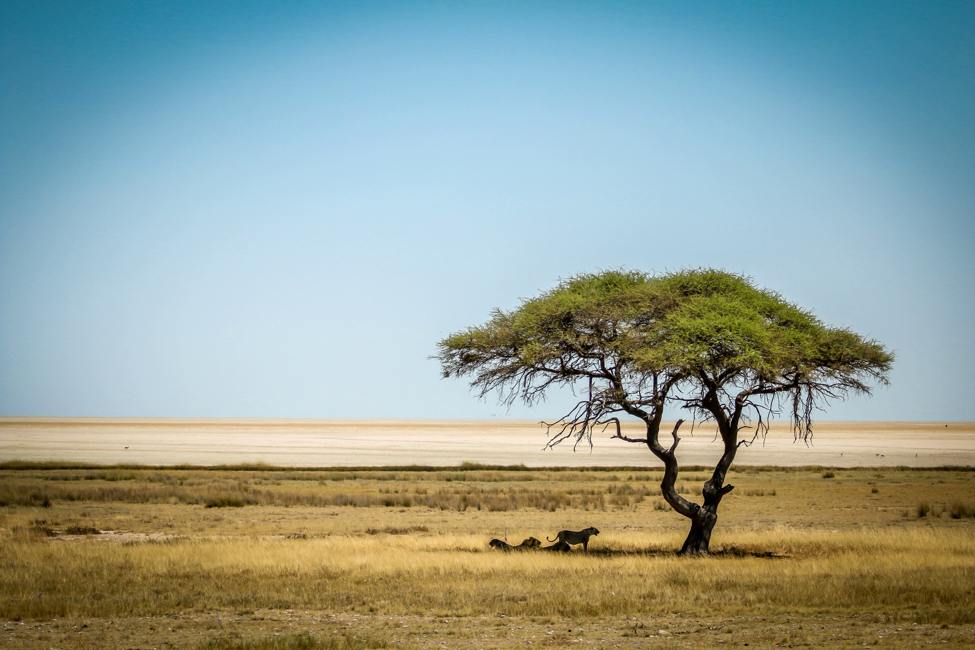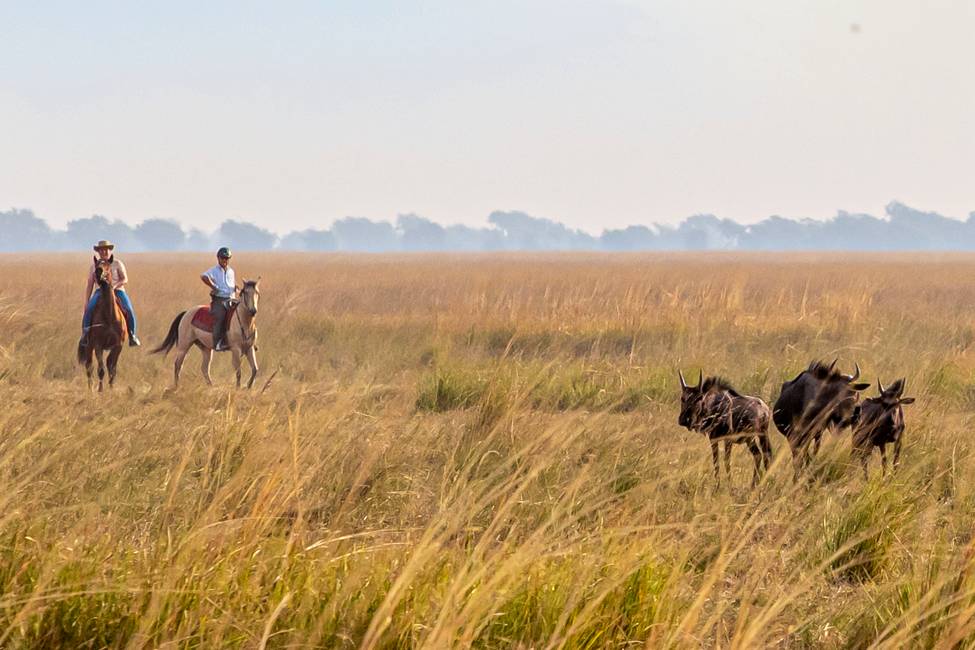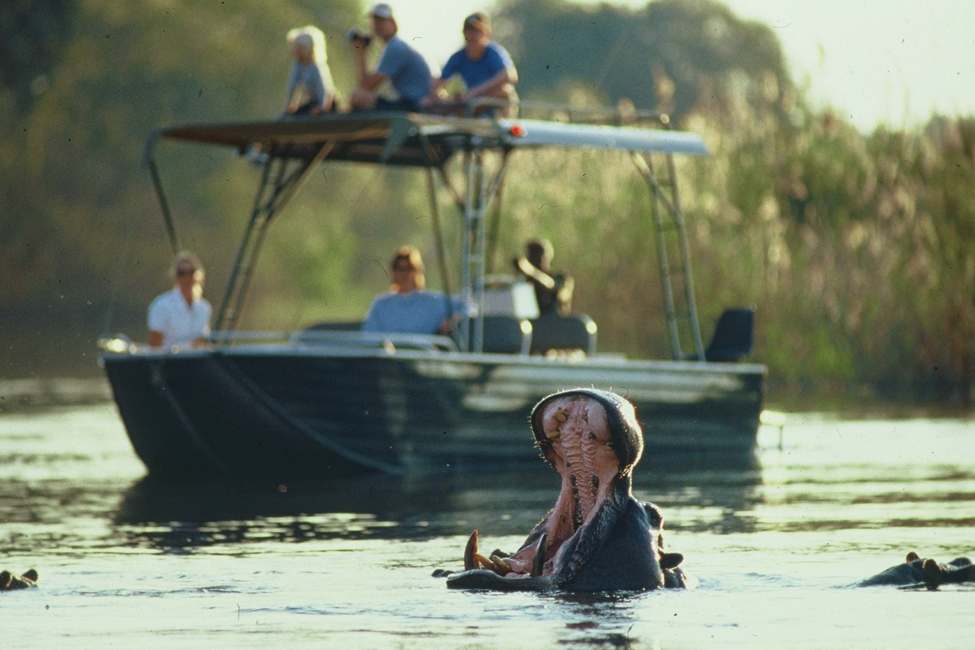Hwange: Your Guide to Zimbabwe’s Biggest Park
With over 100 kinds of mammals and 400 kinds of birds, Hwange National Park in Zimbabwe is a wildlife lovers’ paradise. Home to all the country’s endangered mammal species, it has one of the continent’s biggest groups of African wild dogs. Visitors can also look forward to seeing giraffes, lions, zebras, leopards, and many of the park’s 40,000 elephants—among the largest elephant populations in Africa!
A diverse terrain of woodlands, savannah, desert dunes, and wetlands is what makes Hwange welcoming to so many animals.
At 9,000 square miles, Hwange National Park is huge. But it’s also part of the even larger Kavango-Zambezi Transfrontier Conservation Area—a wildlife haven double the size of the United Kingdom that runs through Angola, Botswana, Namibia, Zambia, and Zimbabwe. This helps wildlife flourish by allowing animals to wander in search of food and water.
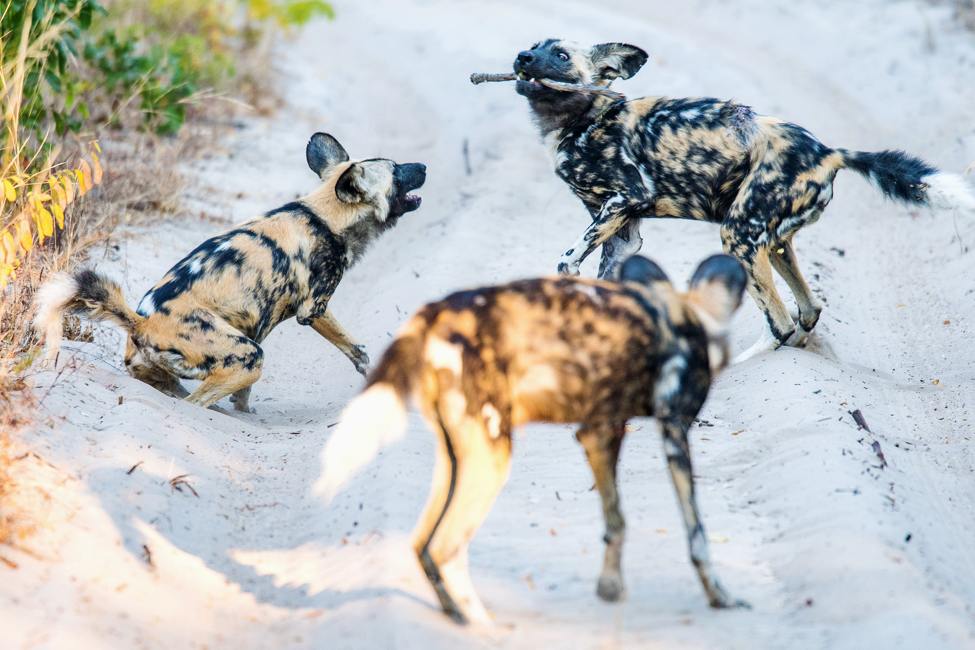
African wild dogs are expert hunters, but they also love to play. Hwange has one of Africa’s largest populations of these animals. Photo by Paul Balfe.
Wildlife
At Hwange National Park, you’ll have a chance to see wildlife like you’ve never seen it before. Most of the big safari animals live here, including the Big Five. Hwange is also the only Zimbabwe reserve where you have a good chance of seeing brown hyenas and the gemsbok, or South African oryx.
The park is home to eight kinds of large carnivores, including African wild dogs, lions, leopards, spotted hyenas and cheetahs. The endangered pangolin also lives here, but can be hard to find.
Birds are plentiful too. Large ground-dwelling birds like ostriches, southern ground hornbills, and kori bustards are easy to spot. For a fun challenge, look for smaller songbirds like the racket-tailed roller, a sky-blue bird named for its long tail feathers with rounded “paddles” at the tips. Birds of prey include the martial eagle, yellow-billed kite, Dickinson’s kestrel, Cape griffon, pearl-spotted owlet, and African hobby.
When is the best time for birdwatching? To see the most species, visit in the wet season, which lasts from November to March. This is when the most migratory birds are around. In the dry season, they fly off to Europe and Northern Africa.
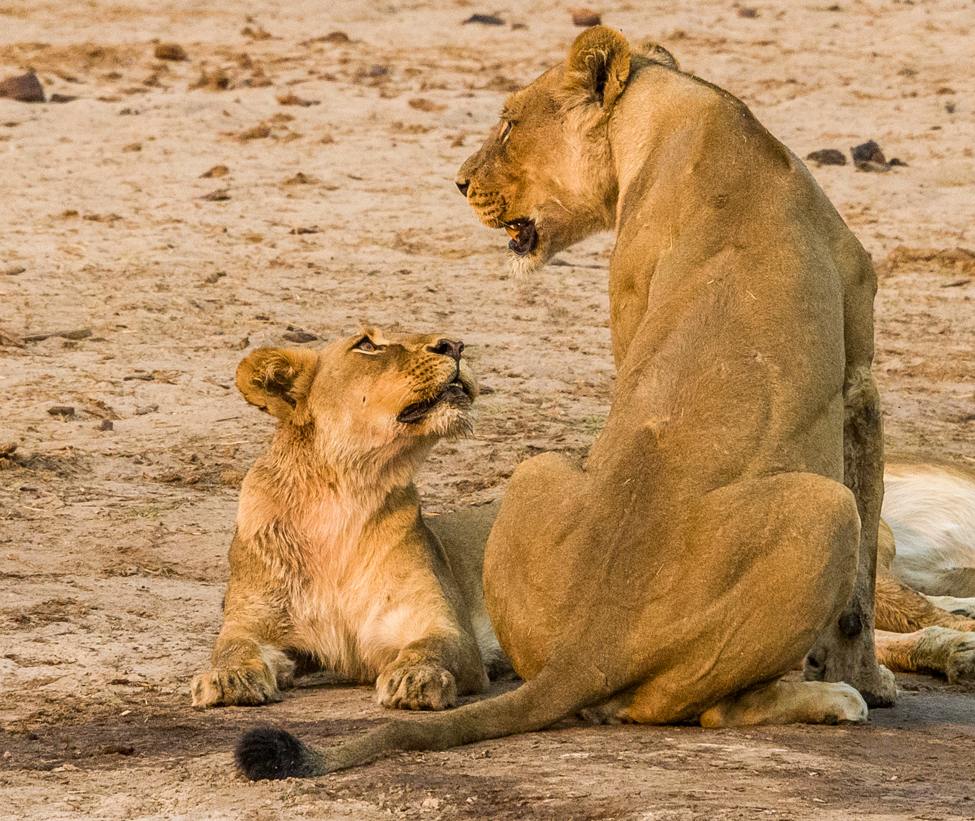
Lions laze near a waterhole in Hwange National Park. Photo by Steven dosRemedios.
Visiting Hwange
To taste all that Hwange has to offer, Ujuzi travelers typically spend five or six days in the park. They spend half their time in the eastern region and the other half in the western section.
Explore the park with game drives, guided walks, horse riding-safaris, or even a train ride—the Elephant Express is an open-sided train that allows for unparalleled game viewing while traveling between the northern part of the park and the southeastern area. (This sample Hwange safari itinerary includes a trip on the Elephant Express, as well as game drives and walks in Eastern and Western Hwange.)
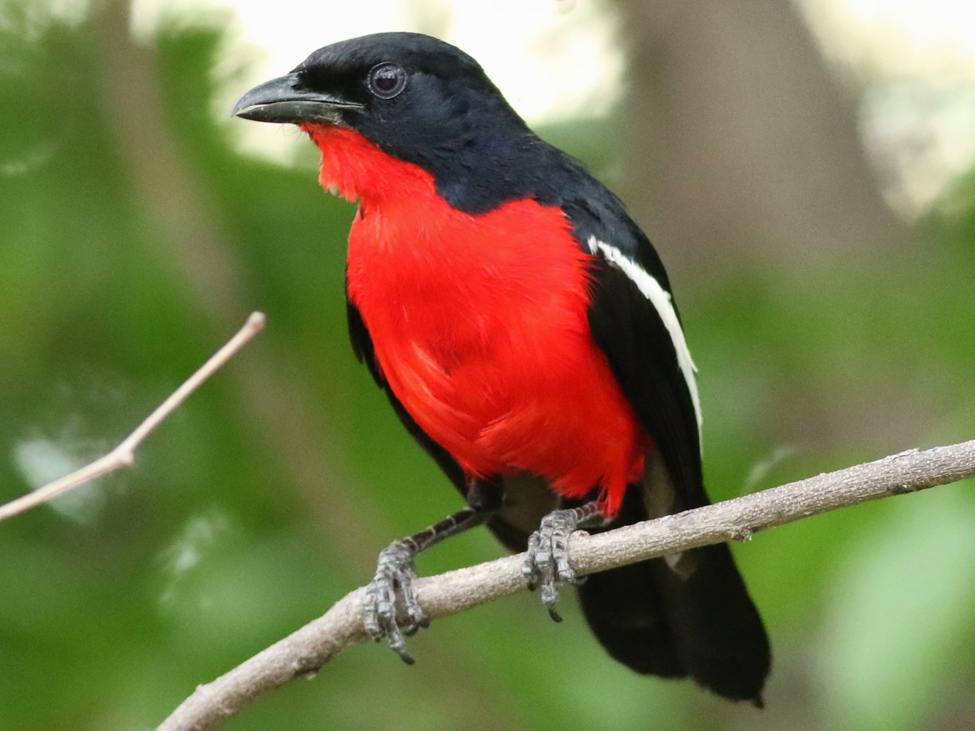
The crimon-breasted shrike is one of many colorful songbirds found in Eastern Hwange. Photo by Derek Keats.
Eastern Hwange
The lush savannas and forests of the eastern segment support a variety of antelopes and other herbivores, as well as the predators that depend on them—including lions, leopards, African wild dogs, and both spotted and brown hyenas.
Adventurers can look forward to guided bush hikes, game drives, and horse-riding safaris, all of which offer excellent photographic opportunities.
In southeastern Hwange, you’ll find the Ngamo plains, the remnant of an ancient lake. These plains are home to the largest wetlands and savannah grasslands in the park. Here, you’ll also find woodlands and savanna dotted with acacia and leadwood trees. Common sightings include wildebeests, Cape buffalos, kudus, waterbucks, and sables. Lions, jackals, and cheetahs are the predators most often seen here, though leopards and wild dogs also frequent the area.
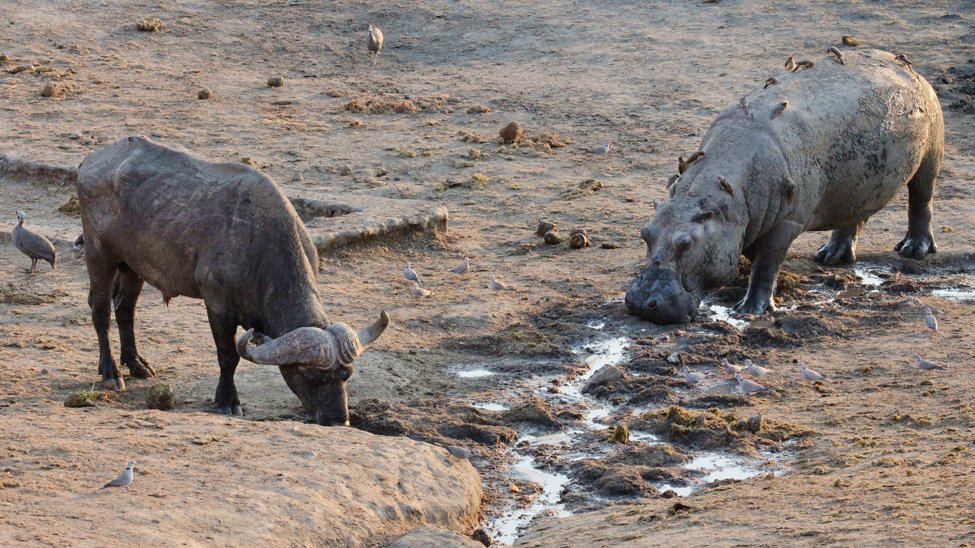
A Cape buffalo and a hippo dotted by oxpeckers seek refreshment at a seep. Photo taken in Etosha National Park by Joe Pyrek.
Western Hwange
Located on Zimbabwe’s border with Botswana, the western part of Hwange National Park consists of grasslands, marshes, and scattered mopane woodlands. With a good guide and a little luck, you may see the African wild dog, critically endangered black rhino, and roan and sable antelope.
The Nehimba Seeps in northwestern Hwange are a must-see. This year-round source of water is incredibly important to the animals here, as Hwange has no major river feeding it. (Etosha in Namibia is the only other African reserve like this). In the wet season, you will find large pools fringed by lush greenery and, of course, a plethora of wildlife. In the dry season (April to October), watch animals dig to for the water that flows into the seeps from just below ground.
Western Hwange is also notable for its archaeological treasures. The Bumbusi National Monument in the park’s northwest comprises two important sites: the remains of a precolonial stone fortress built in the eighteenth and nineteenth centuries, and rock engravings and paintings dating back to the Stone Age.
The fortress was built by members of the Rozwi empire, which at one time covered what are now Zimbabwe and Mozambique, and extended into present-day Botswana and South Africa. Today, only sections of the fortress’s three-foot-thick stone walls remain, along with some platforms and the ruins of at least eighteen dwellings.
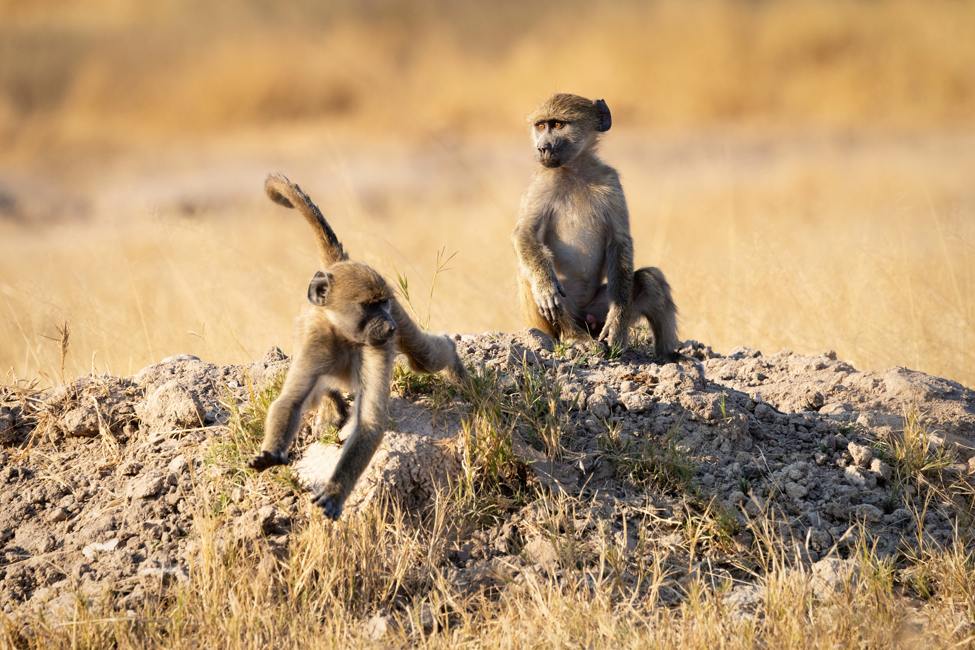
Young baboons play in Hwange National Park. Photo by Ian Mackey.
Plan Your Trip to Hwange National Park
Hwange is ideally located near the borders of Botswana, Zambia, and Namibia, making it a great place to visit on a multi-country safari. Or include it as part of a greater Zimbabwe safari—make sure to include a stop at Victoria Falls, which is only a short flight or two-to three-hour drive away.
Contact Ujuzi to make the safari of your dreams come true.
Sign up for the Ujuzi Newsletter!
From top travel tips to innovative safaris and conservation movement, get inspired to plan your next African safari!
By submitting this form, you are consenting to receive marketing emails from: . You can revoke your consent to receive emails at any time by using the SafeUnsubscribe® link, found at the bottom of every email. Emails are serviced by Constant Contact


